
Lavenders for all four season? Yes! (though the winter-blooming varieties are for milder climates, only.)
After designing gardens for over 20 years now, I’d have to say lavenders in at least 90% of my gardens – and for good reason!
Many varieties of lavender are really long-lived and they thrive on neglect (the most common cause of their demise is poor drainage and overwatering.)
But most importantly, the deer don’t like them, rabbits don’t like them, and even our dreaded gophers tends to leave them alone.
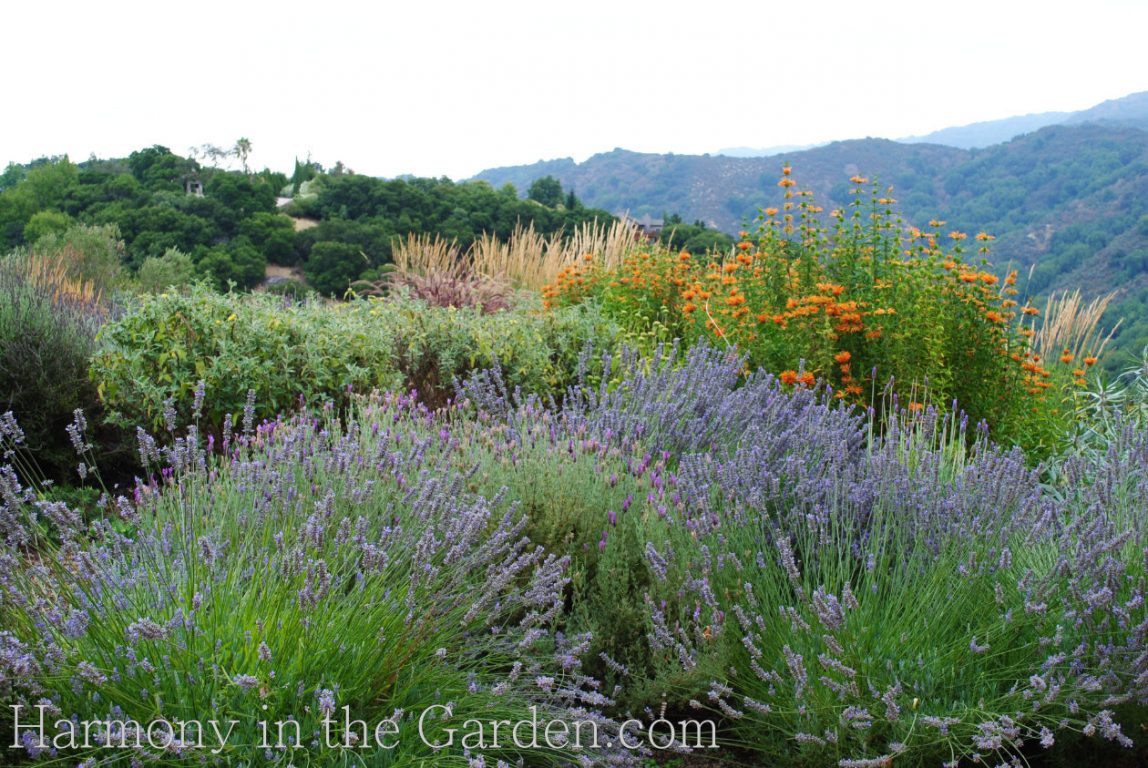
However, despite their best qualities, I’ve noticed that when consulting with gardeners, there seems to be two main complaints they have about lavenders:
1. Gardeners have become jaded with lavenders. I think this is because lavenders do so well in our area they’ve become a bit overused (especially with a few of the more common varieties.)
2. Some people are frustrated with how lavenders look in the winter – comparing them to half-dead mounds of sparse sticks.
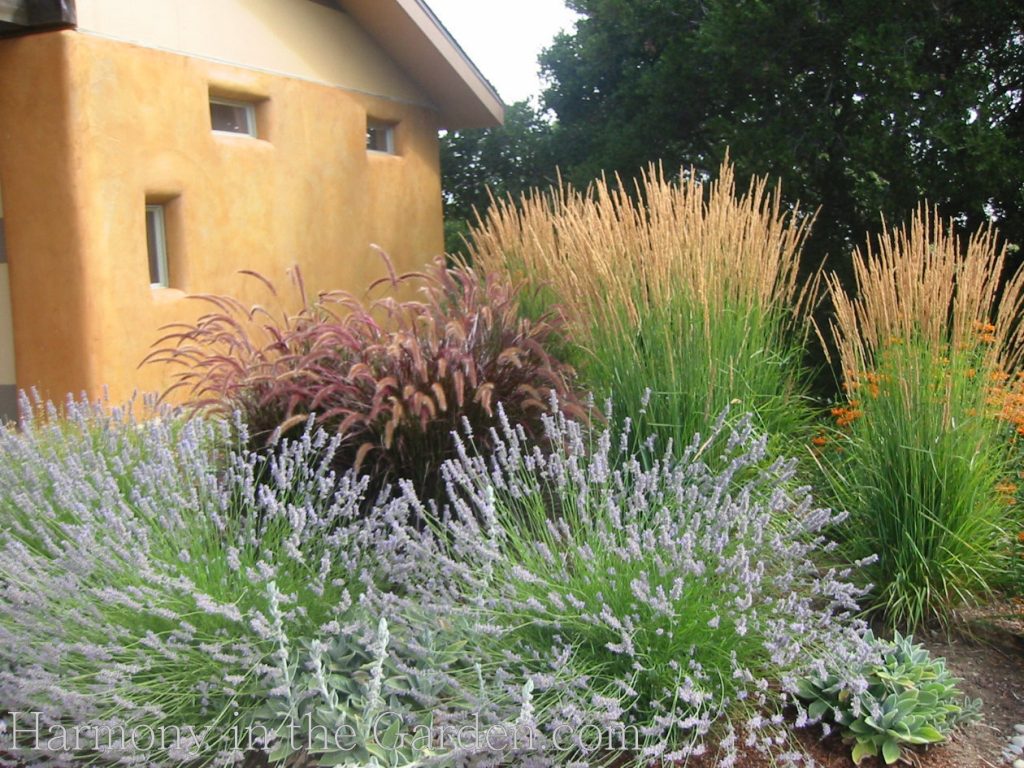
Today, I want to share my favorite lavender varieties from my garden and explain why I chose each one.
The primary reason I have so many different types is that I absolutely LOVE the scent of lavender!
By strategically placing certain varieties throughout my garden, I can enjoy at least nine months of blooming flowers and, believe it or not, year-round fragrance.
I can already see some of you shaking your heads in disbelief, but it’s true! So, here’s a seasonal calendar outlining the varieties I use to achieve that year-round lavender bliss:
Late winter/early spring – Lavendula stoechas (Spanish lavender)
The Spanish lavenders are some of the earliest to bloom in my garden, often as early as March.
These are the flowers that have the ‘rabbit ears’ on top, giving them a very unique appearance that makes them a favorite among children. This variety also has more of a eucalyptus fragrance and can also handle a bit more humidity than other varieties.
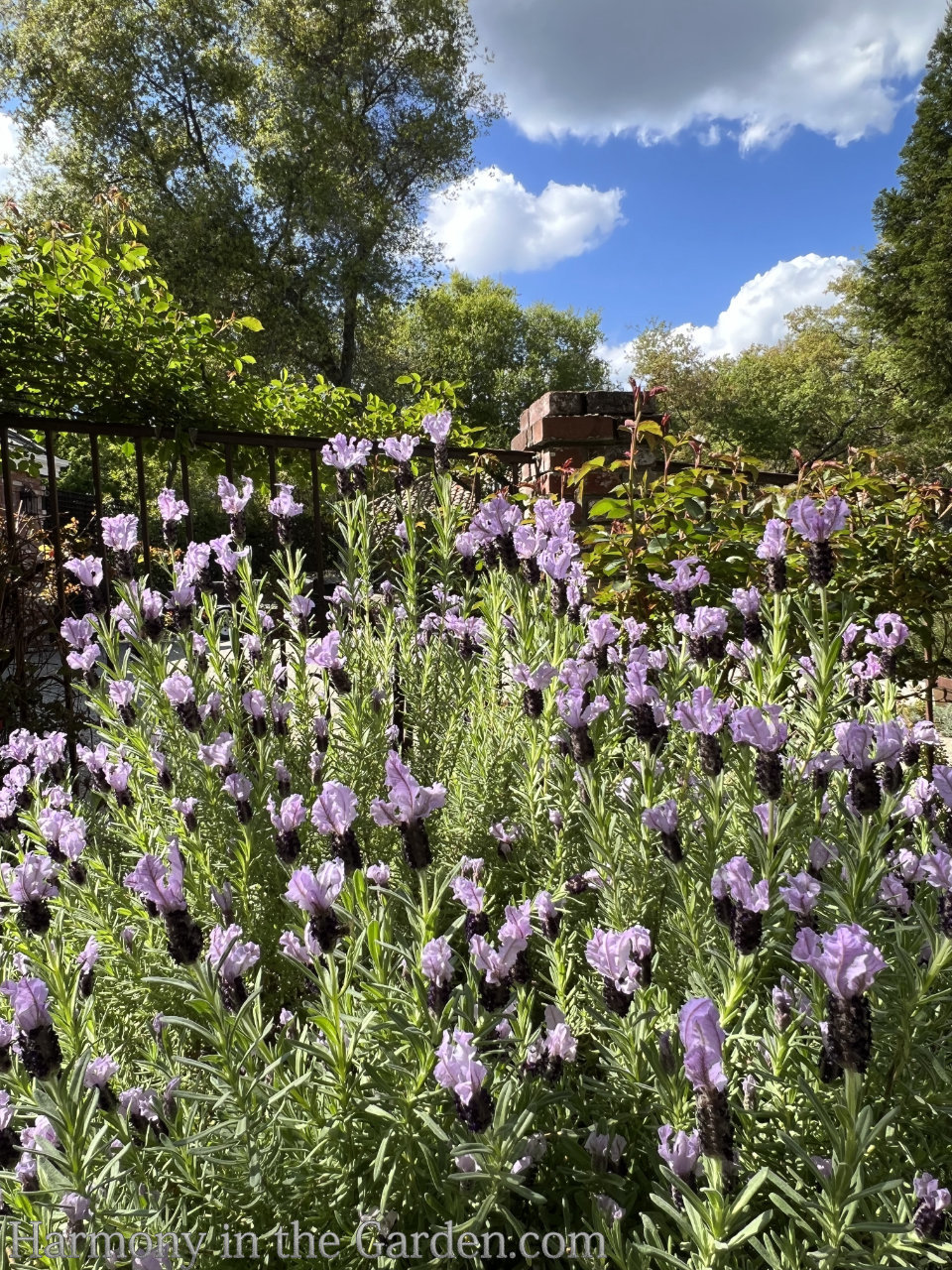
Lavender stoechas ‘Kew Red’
This is the variety of Spanish lavenders I use most often. It isn’t red at all, actually, but a stunning, lavender-pink color.
The flowers are at least twice as large as the standard variety, and they they go through various petal colors depending on the time of year. Sometimes they’ll start out pale pink, often with a dark maroon center, then turning a light lavender color.
The entire plant has a looser habit, too, blending in beautifully in a more casual garden setting.
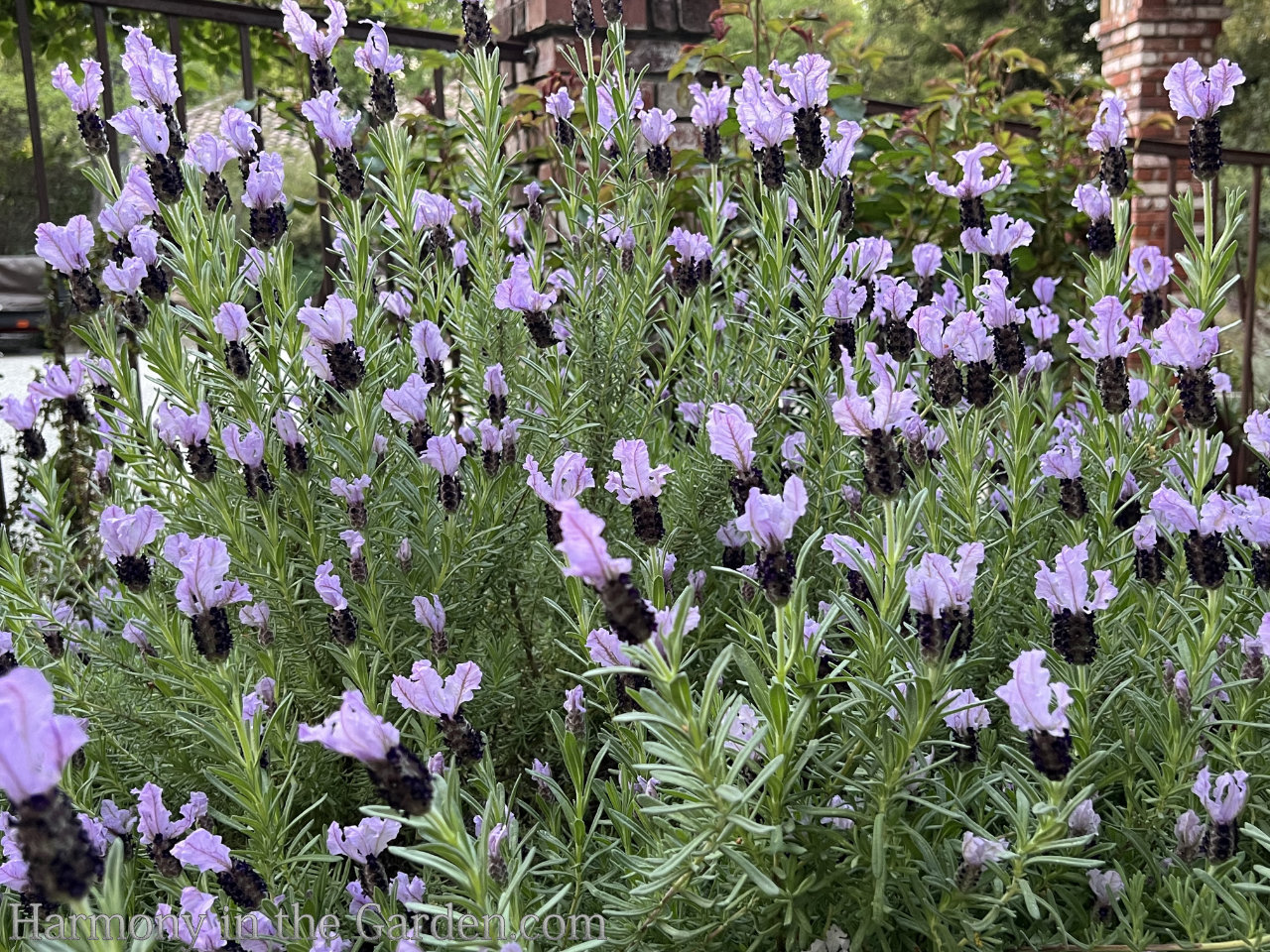
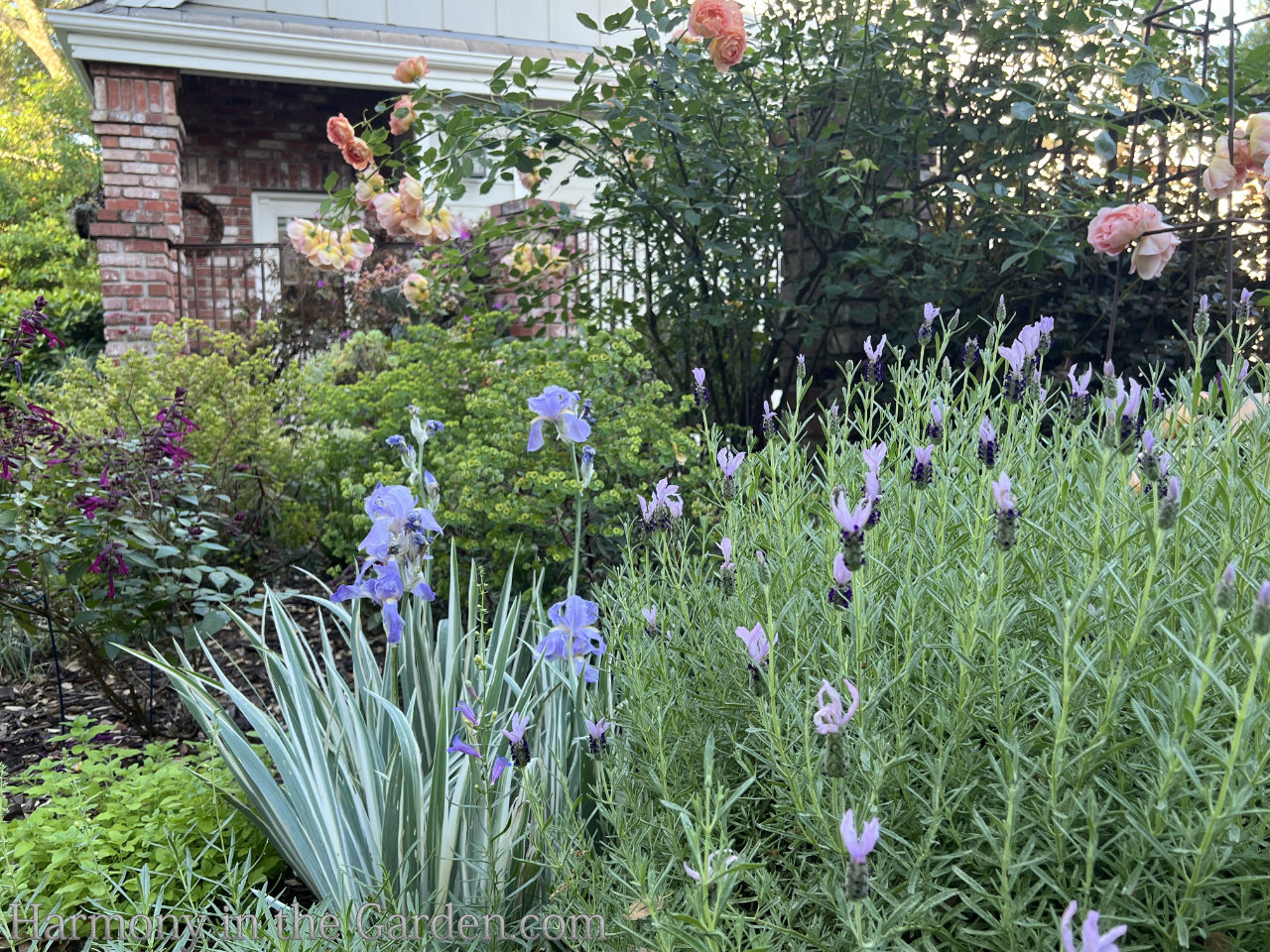
Here it is just beginning to bloom in my back garden, planted under my oak tree (click here to see my other low-water plants in this area.)
I especially love how the colors of the flowers echo the neighboring grape-scented blooms of the iris variegata.
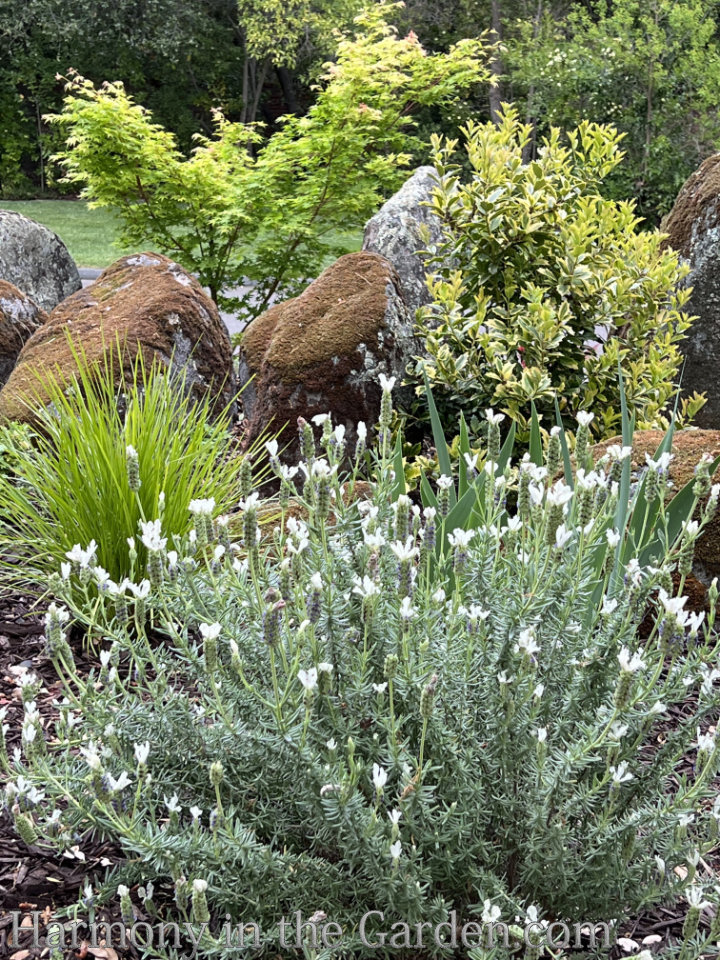
Lavender stoechas ‘Javelin Forte White’
‘Javelin Forte White’ is a new addition to my garden, with the tag touting it as being more tolerant of cold and wet winters than other varieties.
Similar to other Spanish lavenders, it sports a top hat (or bunny ears) which are actually called ‘bracts.’ However the bracts of ‘Javeline Forte’ are a lovely creamy white with lime green veins running throughout, versus the more typical shades of purple.
The main part of the flower is green with very dark purple centers, that fade to a lighter white as they age.
I especially appreciate how the white color stands out when viewed from a distance (as you can see here.)
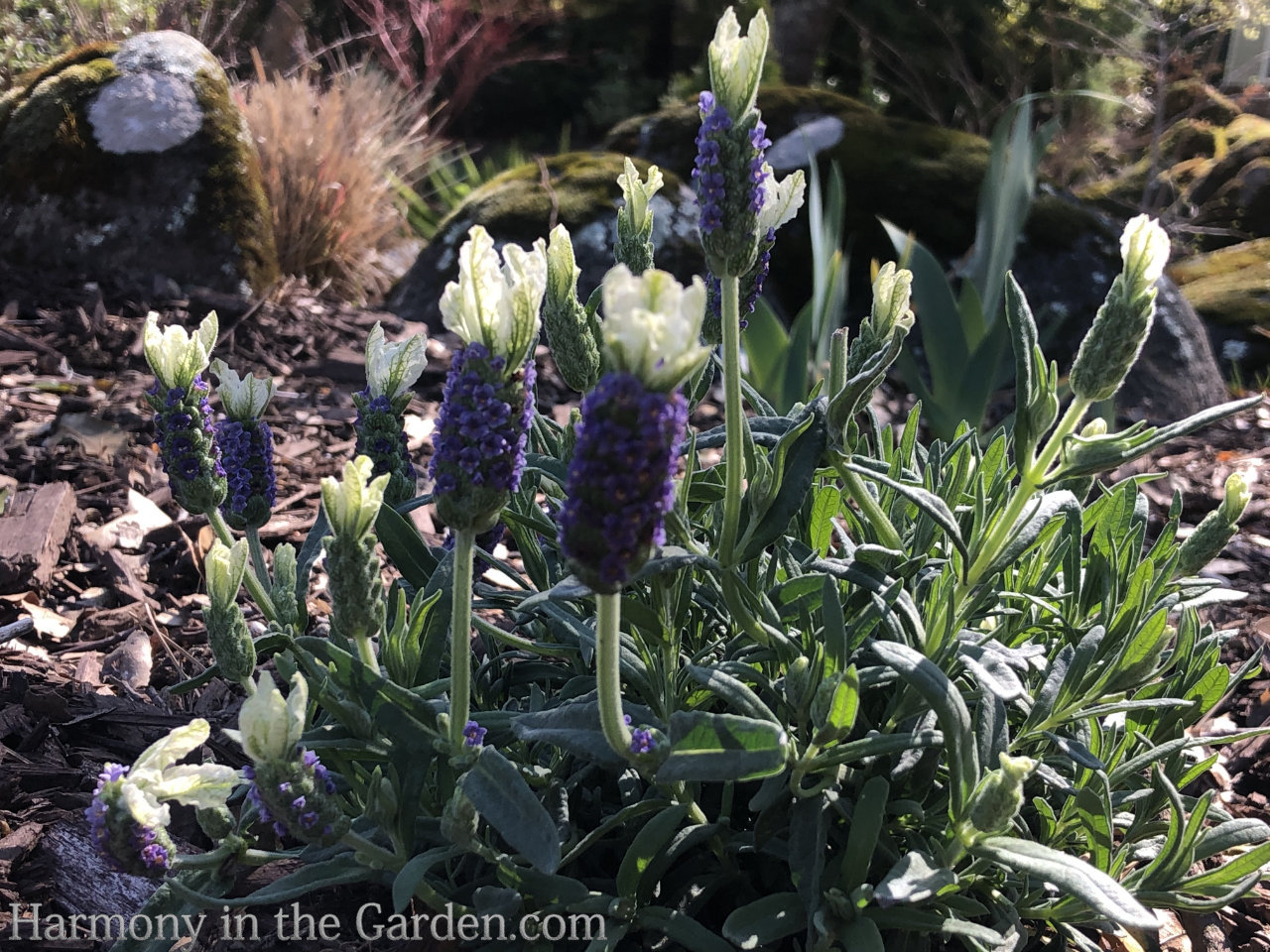

Lavandula stoechas ‘Madrid Lavish Pink’ (Dwarf Lavender)
This is another Spanish Lavender, however it’s a dwarf variety that grows to a tidy 2’x2′.
The soft dusty-rose flowers of ‘Madrid Lavish Pink’ are oversized, and almost form an unusual triangular shape.
And it’s tight shape and compact size make it ideal for the front of the border.
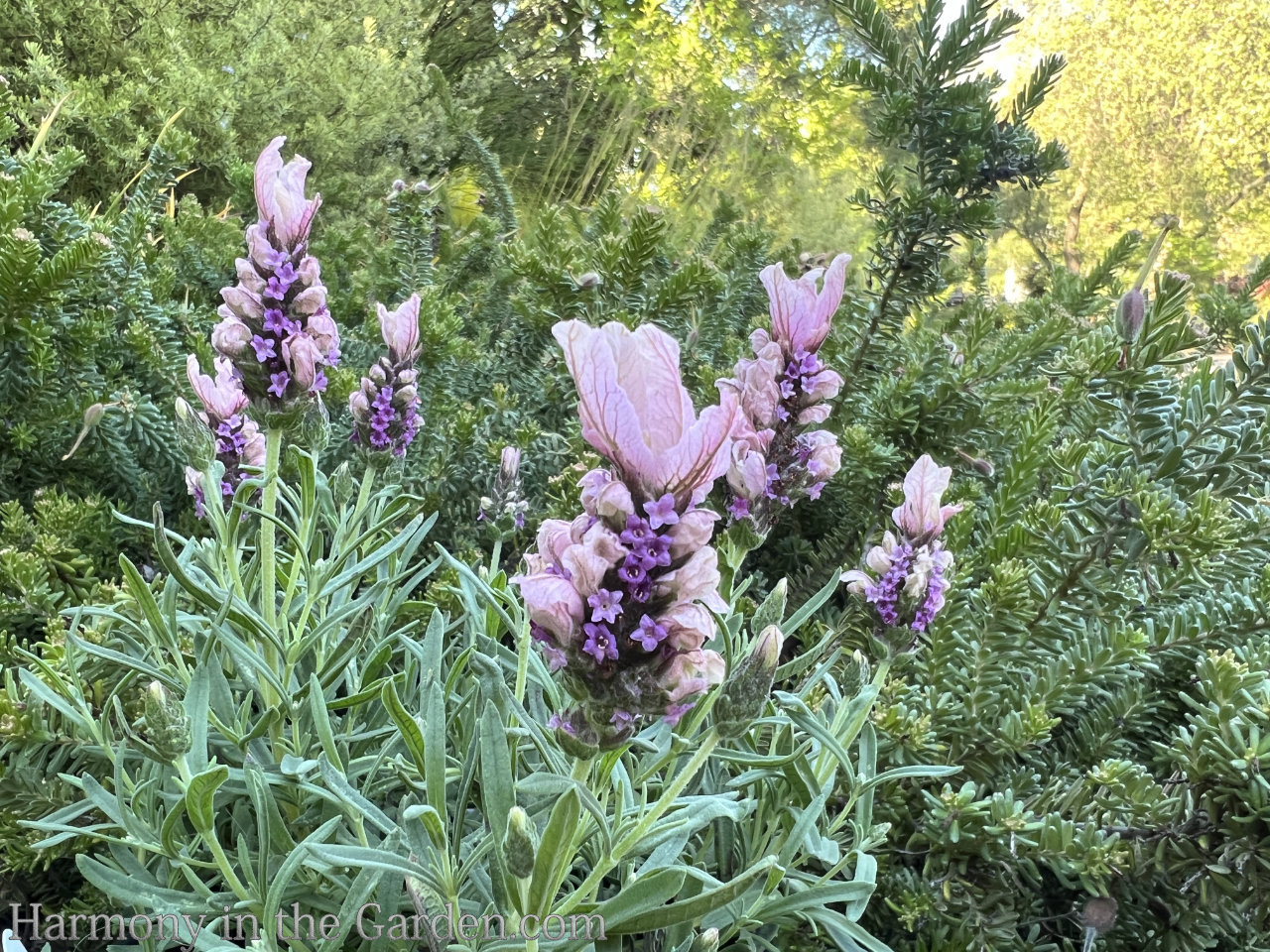

Lavandula viridis (Yellow Lavender)
This is another early blooming variety, with rabbit-ear blooms similar to Spanish lavender.
While it can be hard to find, it’s worth the hunt as it’s a spectacularly subtle color to add to your garden bed. Especially if you were creating a serene chartreuse-green bed, or an all yellow bed.
If you happen to live in Northern California, you can see a few incredible examples of this lavender at the Sacramento Historic Cemetery.
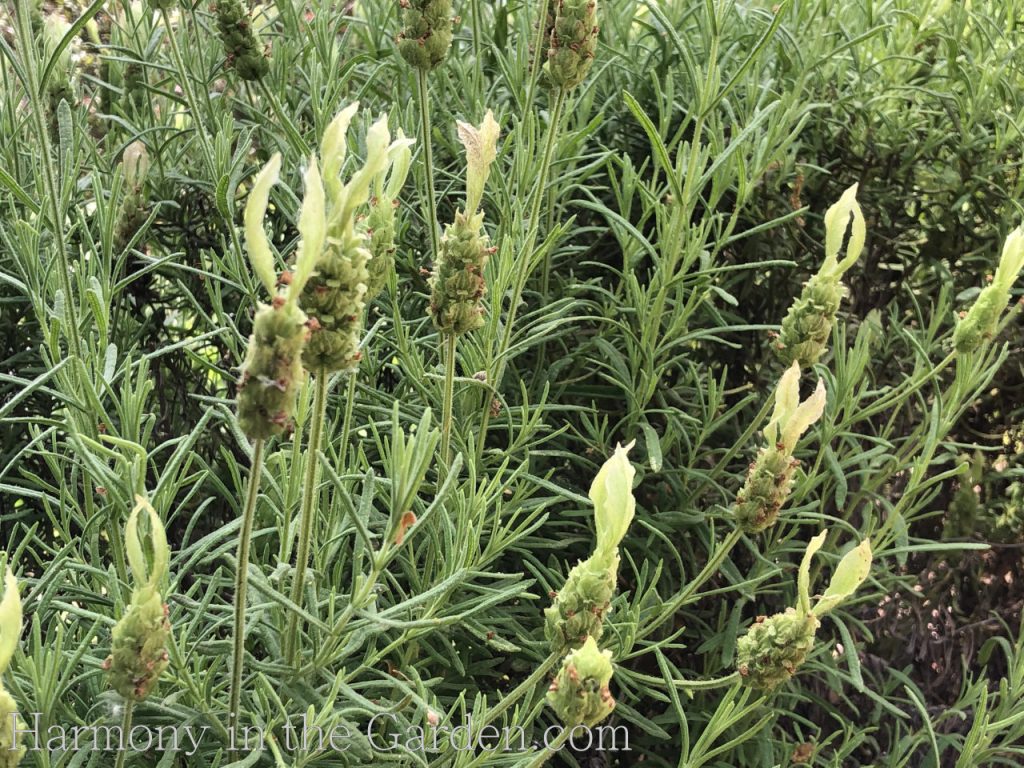
Early summer – Lavandula angustifolia varieties (English lavenders)
Next up are the English lavenders, which begin blooming June through July. They’re also quite hardy, performing well even in zone 5 gardens!
These lavenders are generally smaller, with tight, barrel-shaped flower clusters on tiny blue-green foliage. When clients specifically request lavenders to use for cooking, I’ll use the English varieties as they contain very high-quality and fragrant oils.
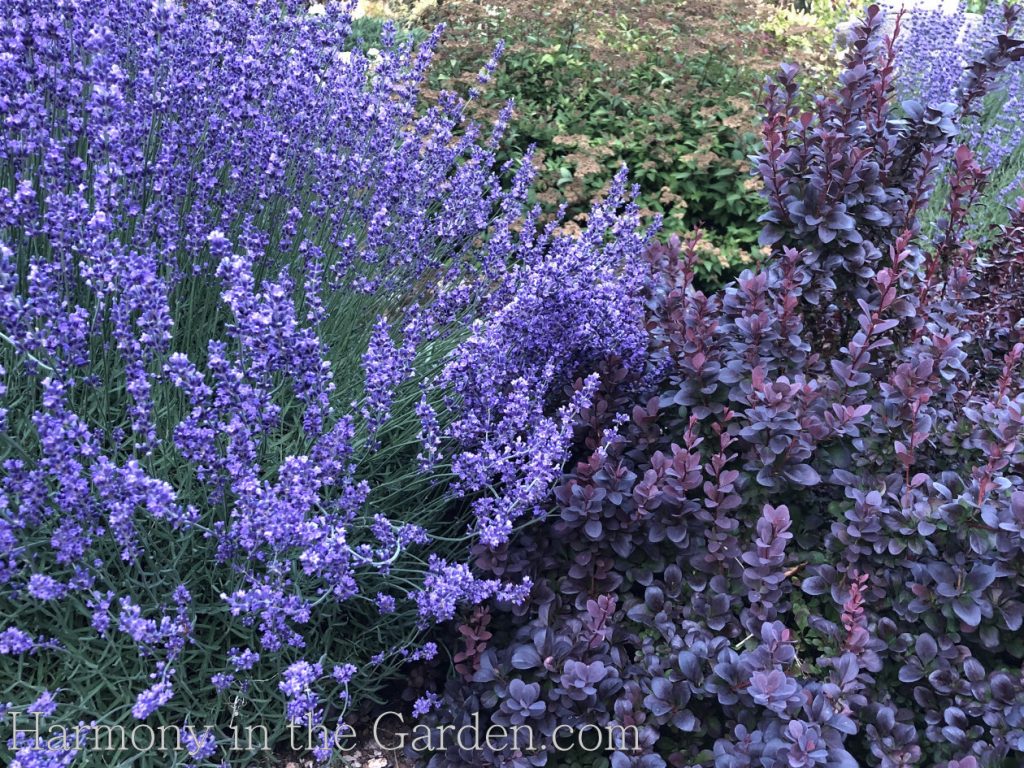
Lavender angustifolia ‘Hidcote’
‘Hidcote’ is my very favorite English lavender variety as it has the deepest purple/blue flowers I’ve seen.
Give it a few years to become established, and you’ll be amazed at the zillions of flowers it produces!
‘Hidcote’ also withstands hot summers better than most English lavender (a bonus in my garden!)
They’re supposed to grow 18-24” but when they’re happy, it’s more like 24” – 30” (another case of a plant not reading it’s own plant tag – ha!)

When gardeners complain about the look of lavenders in the winter, they’re usually talking about their English lavender.
But don’t forget – English lavenders more than make up for this once early spring hits!
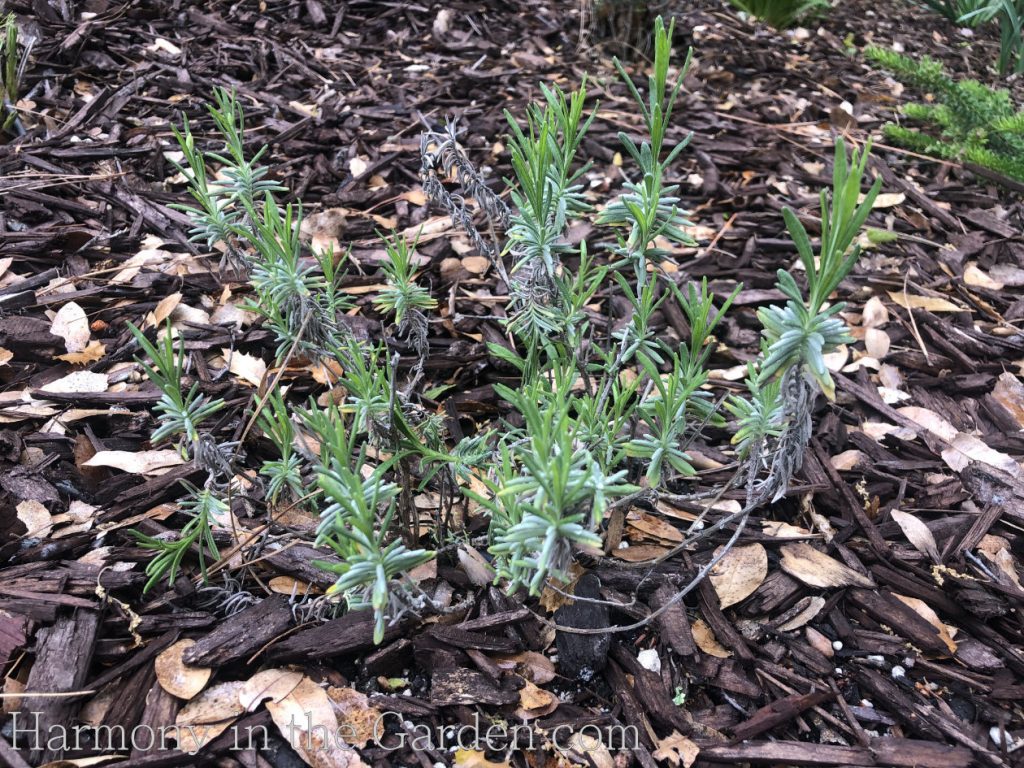
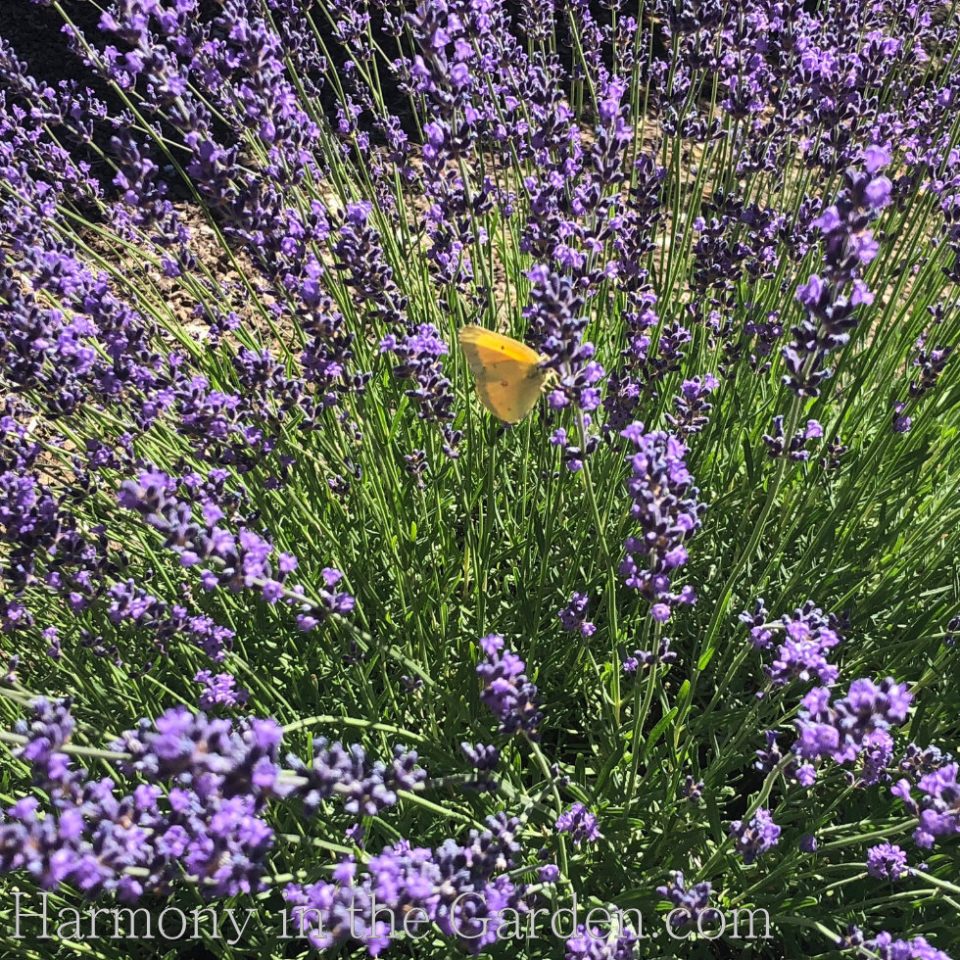
Lavender angustifolia ‘Blue Spear’
This is another English lavender that is quickly becoming a favorite, with lighter flowers that are larger than Hidcote’s.
To ensure the English lavender’s downtime doesn’t drive a client crazy, my solution is to plant something with year-round beauty nearby to distract the eye.
This includes other lavender varieties that look good in the winter (see below!)
Mid-to-Late Summer – Lavandula x intermedia varieties (French Lavender)
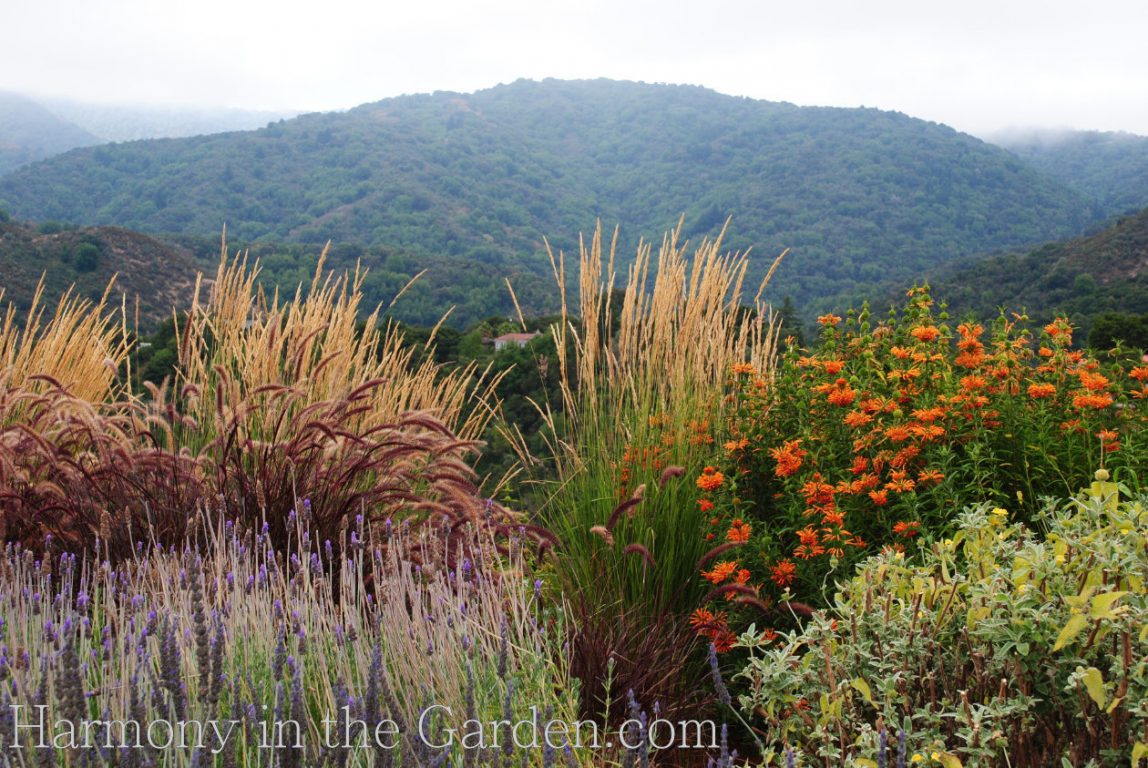
Lavender ‘Provence’
‘Provence’ is the French lavender that most people think of and one variety I’ve used extensively over the years.
‘Provence’ quickly grows to 3’x5′ with larger, softer foliage has looks like it has little ‘teeth’ along the edges.
When a client tells me that they don’t want a lavender that looks half-dead in the winter, I’ll give them a French lavender.
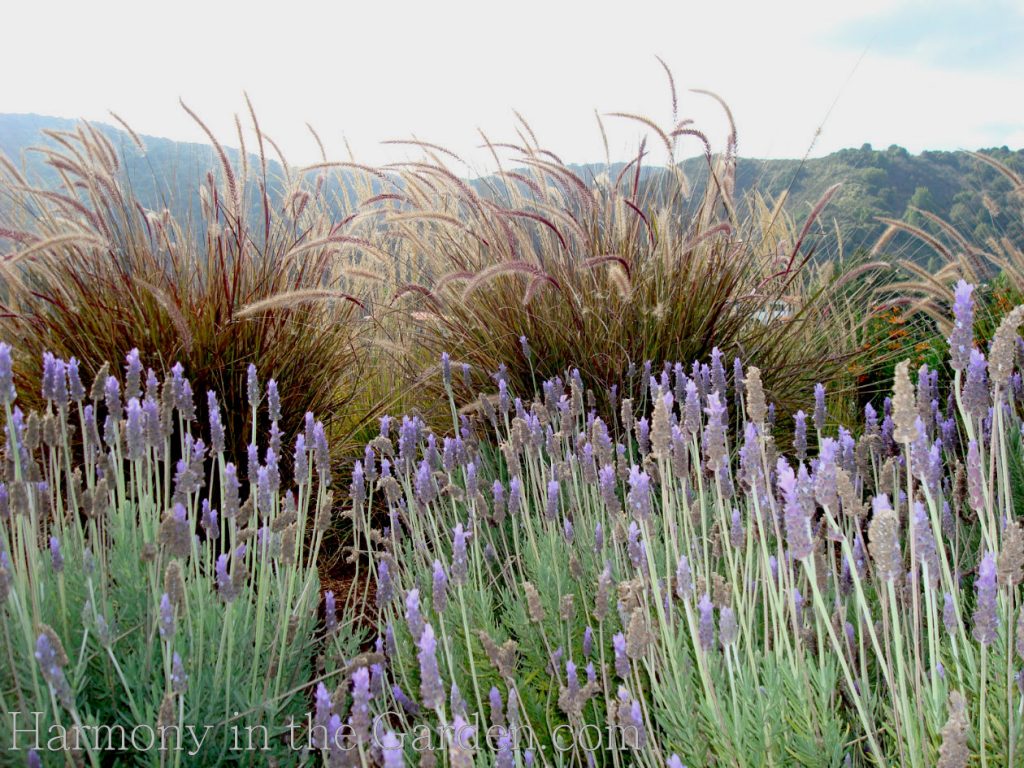
Lavender heterophylla ‘Sweet Lavender’
‘Sweet Lavender’ is very fast growing to a whopping 4×6. It’s a really old variety, dating to the 1800s, and in my experience, it’s hardier than other French lavenders.
Throughout the summer, ‘Sweet Lavender’ is covered in tons of stick-straight flowers on very long stems (sometimes up to 20”.)
It’s not the best for cooking, as the oil has a high menthol content, but if you want months of summer blooms, this is one that you’ll want in your garden.
Fall thru Winter Meerlo & Pinnata (these varieties are best for mild climates only)
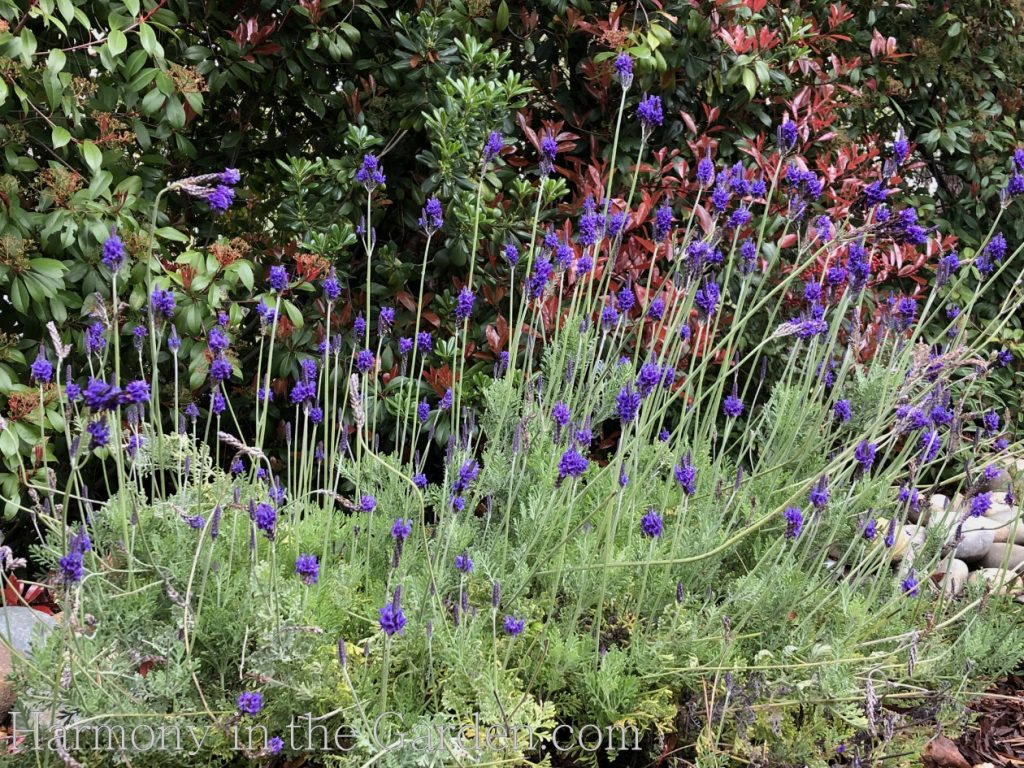
Lavandula pinnata buchii (Jagged Lavender)
Jagged Lavender is an excellent choice for your winter garden. Mine bloom from December through April, with occasional blooms throughout the rest of the year.
These plants are nearly year-round bloomers, experiencing only a few weeks of downtime here and there.
However, it’s important to note that they are tender and should not be exposed to temperatures below 30°F. However, they’re super fast growing so they could be used as annuals, if needed.
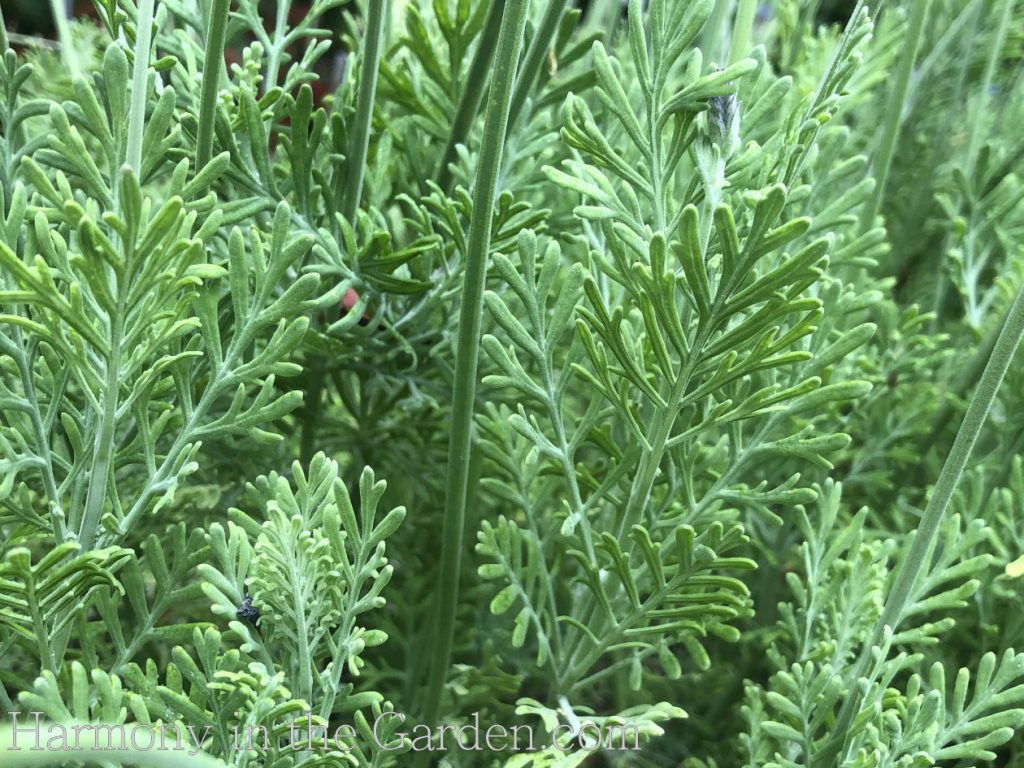
Jagged Lavenders have oversized, finely dissected, and fern-like foliage. The soft green-gray color looks stunning against the deep, dark flowers that grow in a candelabra shape on top of tall 25″ stems.
The plant has a slightly unkempt and wild appearance due to the tall stems, but I appreciate its charm and the flowers it offers when little else is happening in the garden.
In fact, at the end of this post is a video showing just how much our California pipevine butterflies love this plant!

Lavandula allardii ‘Meerlo’
Drumroll, please… The lavender that I’ve had the best luck with year-round is lavandula ‘Meerlo.’
But here’s the catch—I’ve never seen them bloom. Never!
I’ve heard from others that they occasionally produce a few light blue flowers, but none of mine have ever bloomed.
However, that doesn’t bother me because it’s the foliage I’m after.
‘Meerlo’ has some of the most fragrant foliage among all lavender varieties, with lush branches that look great even on the coldest winter days.
Keep in mind that in my garden, the coldest temperatures only get down to around 28 degrees. Even so, ‘Meerlo’ always looks amazing!
During the dead of winter, I’ll clip a branch to bring into the house, and it fills the entire room with its delightful fragrance.
If you’d like to see more winter-blooming flowers in my garden, click here.

In addition to ‘Meerlo’s’ fragrance, the spectacular variegated foliage stops gardeners in their tracks.
Each stem is covered with tightly packed, lightly serrated leaves, each with a gray-green center bordered with creamy yellow margins.
The result is a lavender that appears much softer and lush-looking than other varieties.
And, unlike many other variegated lavenders available today, ‘Meerlo’s’ foliage doesn’t revert to solid gray.
I’ve grow ‘Meerlo’ for many years and have yet to see any branches revert.
A Quick Pruning Tip
A lot of people ask me how to prune lavenders, and I always advise to do so cautiously! If you prune too hard (into the thick woody branches), you might inadvertently kill the entire branch.
With larger varieties, like the French and Spanish lavenders, they should be cut back by 1/3 to 1/2 when finished blooming to keep a more manageable and tidy appearance.
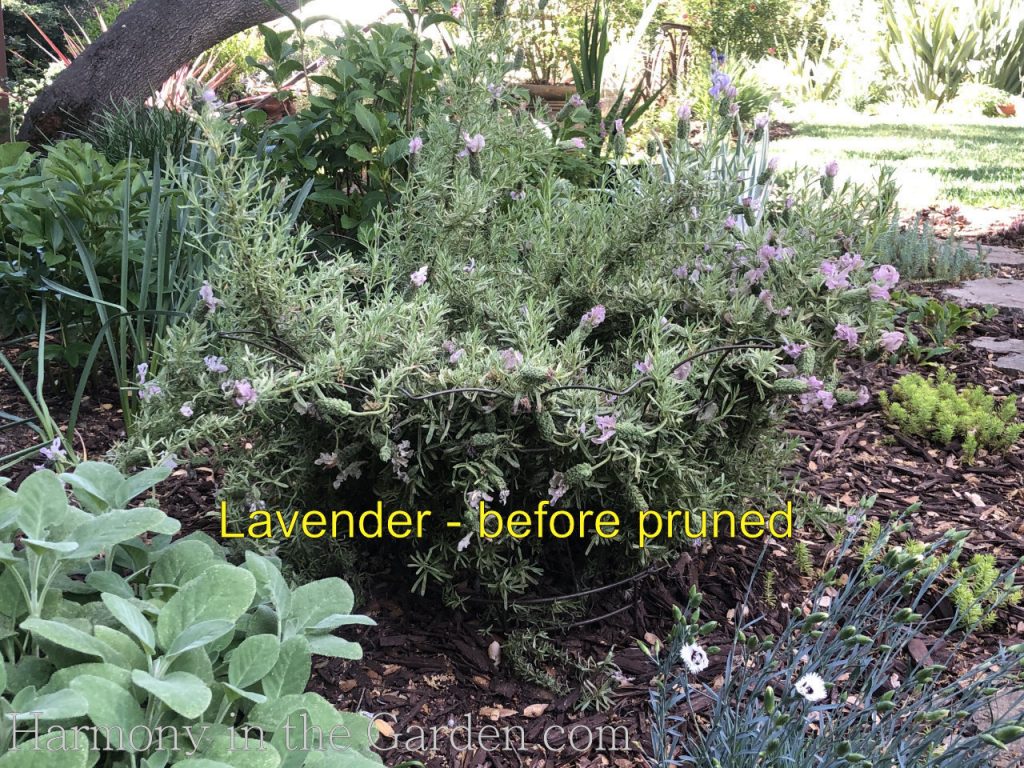
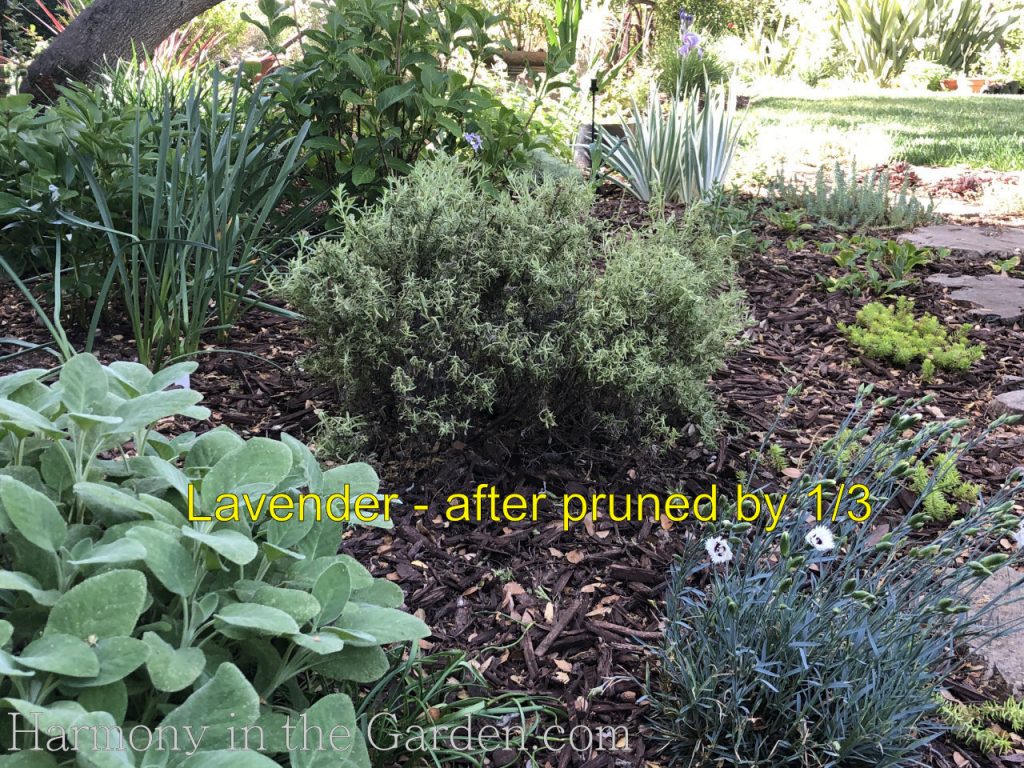
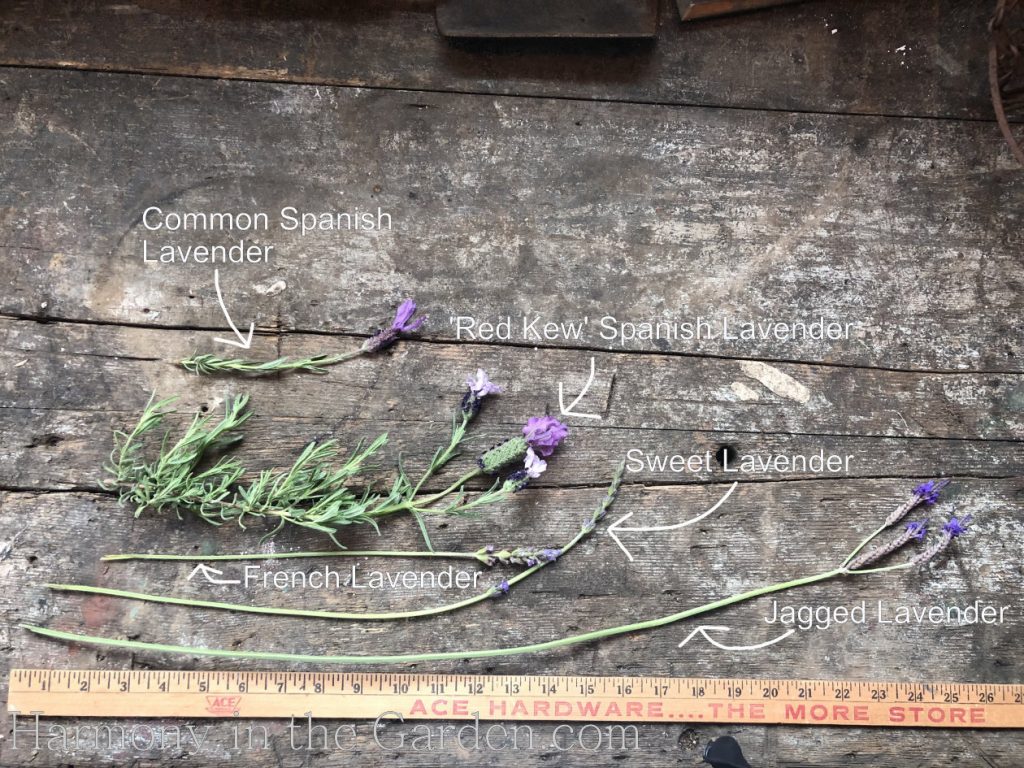
While walking around my garden, gathering lavender flowers that were blooming right now (in early spring.)
I thought it might be fun to lay them out next to a ruler to show you just how different they are!
Some are quite long, some short and stubby, some sparse, and some very lush.
Keep in mind, these are just the early bloomers.
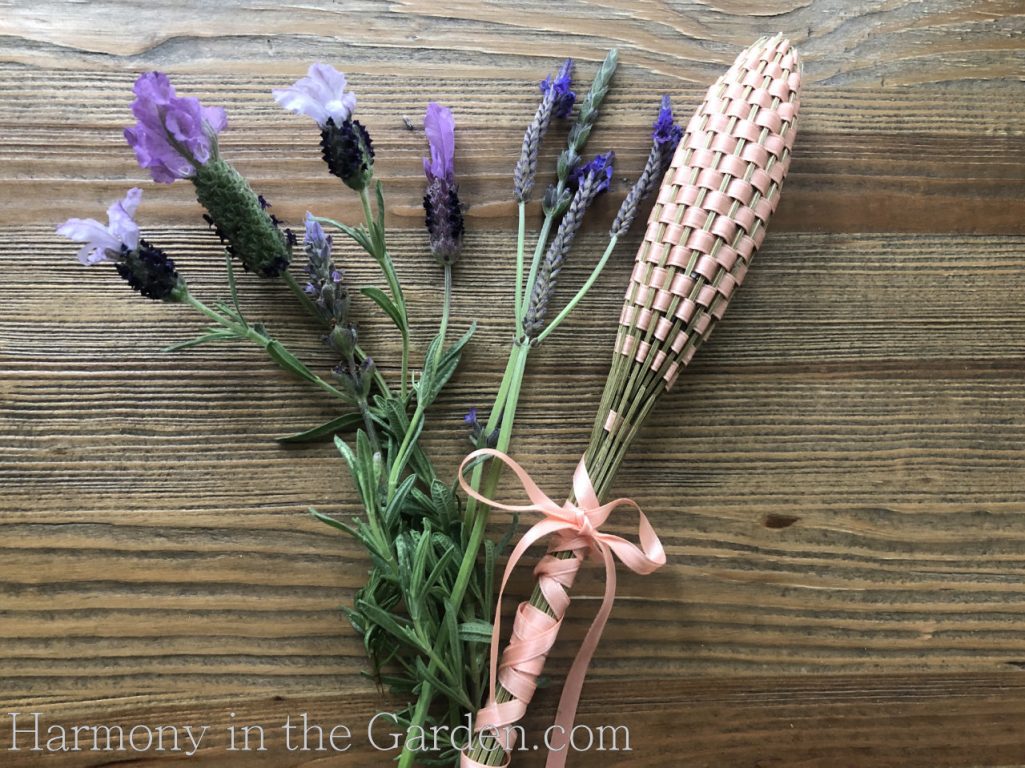
For more information on choosing the best lavender for your climate, click here.
And for a fun and easy lavender project, here’s a simple tutorial on making lavender wands.
I’ve made them in the past and they last for years and years, adding a wonderful fragrance to a line drawer.
This is a lavender wand I made it over 10 years ago and it STILL smells heavenly!






16 Comments
Great information on this article!
I have a triangular space, approximately 5ft on each side that I’d like to plant different types of lavender together in. What do you suggest for using multiple varieties in one space? I’d love to be able to have continuous blooming, but would prefer to have harmony between the different varieties selected. This area has a lot of pedestrian traffic so the planting will receive a lot of attention. Thanks!
Hi Adrienne, so glad you liked the article – thanks! You might try a mid-sized spanish lavender variety in the middle, like the ‘Javelin Forte’ white (I think they now have a Javelin purple variety, too) which will bloom first (mine is gorgeous right now and has such a loooong bloom time), then try dwarf English lavenders (there’s a ton of varieties out there from which to choose, like ‘Hidcote’, ‘Munstead’, ‘Thumbelina’, etc.) and because they’re about 2′ x2′ you can plant them at the front of the borders, then perhaps a large ‘Provence’ type lavender which tends to bloom in the summer placed in the middle. As much as I love ‘Meerlo’ for overall evergreen beauty, it might become too large for that space. But if you think you have the room, you could also place it in the middle with the smaller ones in front – it’s a great variegated color (even though very few flowers) and super fragrant foliage which will look good throughout the year when the other lavenders are finished blooming. Good luck – your neighbors will love this!
Hi! I am new to lavender but am really trying to make some work in a raised container in full sun. They are English lavender. I’m in Zone 7b, North Carolina. I planted them in cactus soil with some extra sand and small stones mixed in. I try not to over or underwater. I have 4 in total, they have all bloomed but now that August is here.. 2 are doing well and 2 have turned complete brown. Is this just the natural life cycle of the plant or are they in trouble? Considering taking them back to the nursery..
Hi Kathryn, it’s hard for me to diagnose the problem, but it definitely sounds like you’re doing everything right in terms of how to plant them. You might try the variety ‘Phenomenal’ as it’s known for doing well with humidity – I wonder if that’s the problem with your current ones? I think Spanish lavenders do better in your climate, as well.
Hi Rebecca,
I have a spot saved for some lavender, but am afraid to choose one. I am in 7b – about like you, but in North Carolina, so I have to subject the lavender to humidity. Any suggestions?
Hi Lin – I’m in zone 9 (where there’s very little humidity) but I do know that the beautiful ‘Meerlo’ has a higher tolerance for humidity, as do the Spanish lavenders. You might give one of them a try. I hope one of them works out for you in your garden!!
What’s the best way to trim lavenders? Mine always look terrible for months after a trim. There must be a better way!
Hi Pat – it really depends on what type of lavender (English, French, Spanish?) As a general rule, I don’t like to cut more than 1/3 off for fear I cut into the hard wood. Lavenders don’t usually respond well to really hard pruning like that. I’ll probably prune my Spanish lavenders within the next few weeks. Maybe I’ll make a quick video showing how I do it and post it on this article. I found an article on Monrovia’s site which might help: https://growbeautifully.monrovia.com/when-to-prune-lavender/
Looking forward to trying the variegated leaf variety. My lavenders are now in full bloom! Wonderful!
Nancy
I think you’ll be pleased with it, Nancy. Don’t be fooled by other varieties, though, as in my experience they all revert back to green/gray pretty quickly. ‘Meerlo’ retains its variegation and has beautiful creamy-yellow tones to it.
I especially look forward to your posts. I have not been a lavender fan but you have peeked my interest. I too live in a zone 9 area.and my goal is blooms year round which I have pretty much achieved with the help of camillias and hellebores.. Love Meerlo.
Hi Cathy, well if you do happen to try one for year-round interest you might give ‘Meerlo’ a go (even though it doesn’t bloom, the foliage is amazing) or even the Jagged Lavender if you have the room (they’re pretty large!) So glad you enjoy my blog, too! 🙂
So interesting to learn in depth how best to use the wide variety of lavenders that are now available. I used to grow them; I have been transistioning more to native plants in my garden but also like to include non-native plants that provide food/cover for wildlife. I do recall Lesser Goldfinch happily feeding on the seed heads of my Spanish Lavender, so I may add one somewhere if I can find a place to tuck one in!
Hi Ronnie – in my mother’s garden, I’ve also seen little Goldfinches absolutely swarm the long lavender wands of ‘Provence’ in the early fall. Maybe a Spanish lavender for the spring feeders and a ‘Provence’ or similar for the fall feeders?
What a fabulous and informative post on lavenders! I love them and use them a lot, but the different varieties and growth forms can be hard to keep track of. This has motivated me to try some new things. Thank you:)
Thanks so much, Katie – I’m so glad its motivated you to try new lavenders. There’s so many on the market now I can’t keep up with them all!